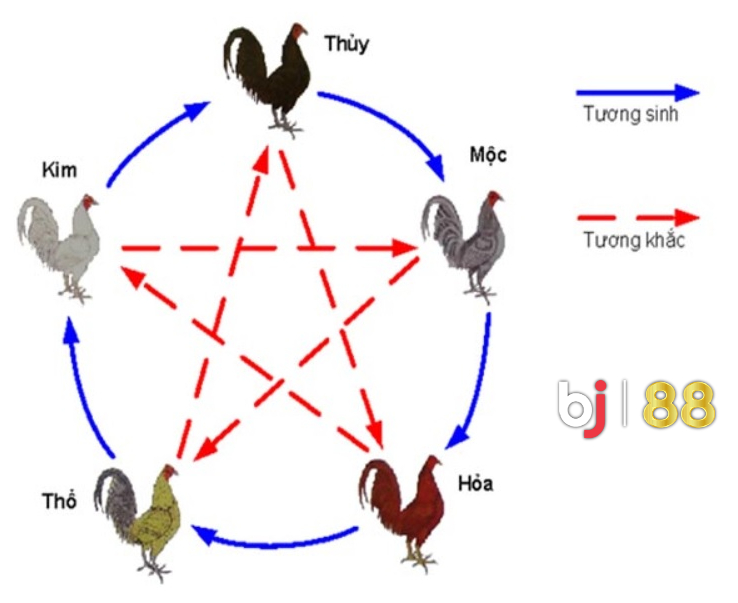Those of those who want to view the color of the tern chicken network but are unsure where to begin might read this post on Vietnamese BJ|88. All of these experiences have been amassed and passed down by long-time monks, and you may consult to them to learn how to best match chicken to your approach.

Why should you look at the color of tern webs?
Viewing the color of the network is one of the spiritual aspects that, according to many monks, a little idealism increases the odds of victory when competing. As a result, before transporting hens to cable, many monks examine good days and bad hours to leave. They carefully consider the color of the opponent’s chicken’s web, as well as the mutuality, before selecting the appropriate war chicken to kick.

Many people believe that observing the color of the tern network, and the fighting chicken network in general, is superstitious. However, in terms of feng shui spirituality, it is crucial. Because it helps the monk reinforce his conviction in the method.
Instructions for seeing tern network colors
To choose which tern fowl to match with which in order to increase your chances of winning, you must first understand their categorization.
Classification of tern chicks using network color
There are many various sorts of tern chickens, but the three most frequent colors are pure white swallow, swallow, and splash swallow (butterfly swallow). Depending on the proper leg color, we will have nice stone spirits, as follows:
- Blue-footed Swallows
- Yellow-legged Swallow
- Yellow-legged Swallow
Pure white terns are rarely famous; regardless of the color of their legs, being talented is tough.

Chicken lines should kick and should be avoided based on their web color.
Now, let’s look at which kind of tern chickens should and should not be booted. This is really excellent knowledge to assist you obtain more experience in cable strategy.
Blue-legged terns
With blue-legged terns, you should and shouldn’t begin with:

- Should kick: Banana chicken, gray chicken, blue-legged cashew chicken (excluding yellow-legged cashew), yellow-legged green or yellow-legged, blue-legged or yellow-legged chicken, sticky chicken with various foot colors…
- Do not kick the white-legged red cashew chicken – yellow, fluffy cashew chicken, burned cotton, or yellow-legged yellow owl chicken.
Yellow-legged terns
Millet should keep in mind that yellow-legged swallows should and should not begin with:

- It is advised to begin with Banana and Stick Chicken, Golden Chicken, Grey Chicken, Blue-footed Cashew Chicken (excluding Blue-legged Yellow Cashew Chicken), Blue-legged, and White-legged Chicken. Furthermore, unlike spurs, it can appear on the muscles of both white-legged cashew hens with wings or javelin tails.
- To prevent losing, do not play with cotton yellow chicken, yellow-legged red cashew, or cotton cashew.
Yellow-legged Mud-legged Tern
What about yellow-legged, muddy chickens? Those who use this method should bear in mind the following dos and don’ts for the same level:

- Should start with: Tern chicken.
- Do not match with: yellow-legged chicken, fluffy chicken, blue-legged cashew chicken, or yellow-legged cotton.
The tern chicken has white feathers, but they are not pure white; they appear slightly filthy, like dirt and muck.
If all three terns meet, the yellow-footed tern can consume both the white-footed tern and the blue-footed tern.
Guide to examining the most common stone chicken network colors.
Monks follow a variety of guidelines for determining the color of chicken and stone webs. The following rules may be mentioned:
View network color using five elements: People split chicken web color into five basic onions. Kim – Moc, Water – Fire – Earth. Where:

- Needle web: Terns have white plumage.
- Carpentry web: Chickens have dry grey plumage.
- Aquatic web: The chicken feathers and the neck mane are black.
- Fire: the fur and mane are flaming red.
- Turkish: Ruby-colored neck feathers and mane, with white legs.
The color of the chicken network is determined by the color of the chicken, its eyes, or legs… From there, you may decide which hens should or should not be cabled.
Final conclusions
Essentially, seeing the color of the tern’s web allows the lion to determine what his approach should and should not be in comparison to any opponent in order to enhance his chances of victory. Remember that this is merely a spiritual component. Winning or losing is determined by the kicking method used and the ability of each victory to compete.



